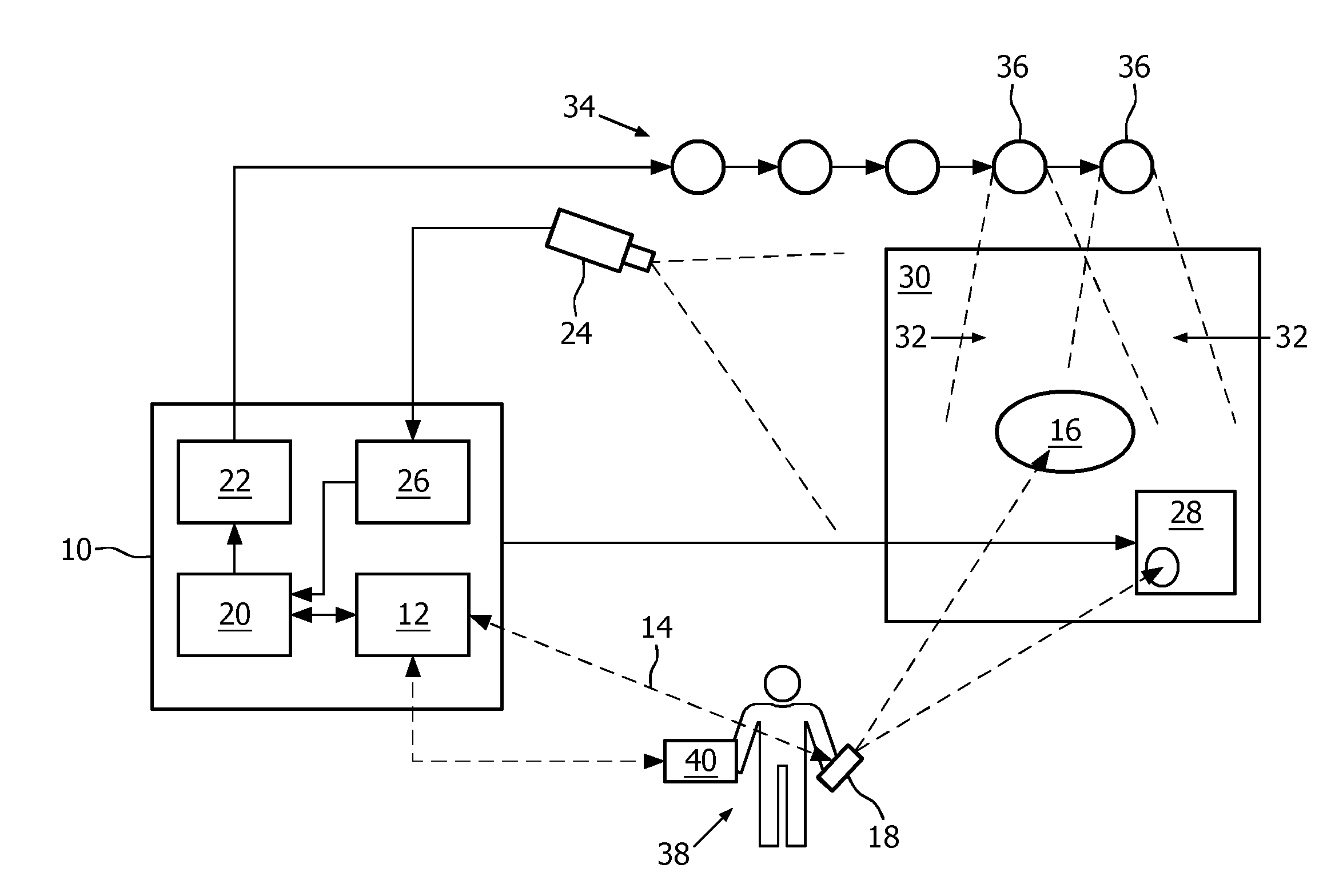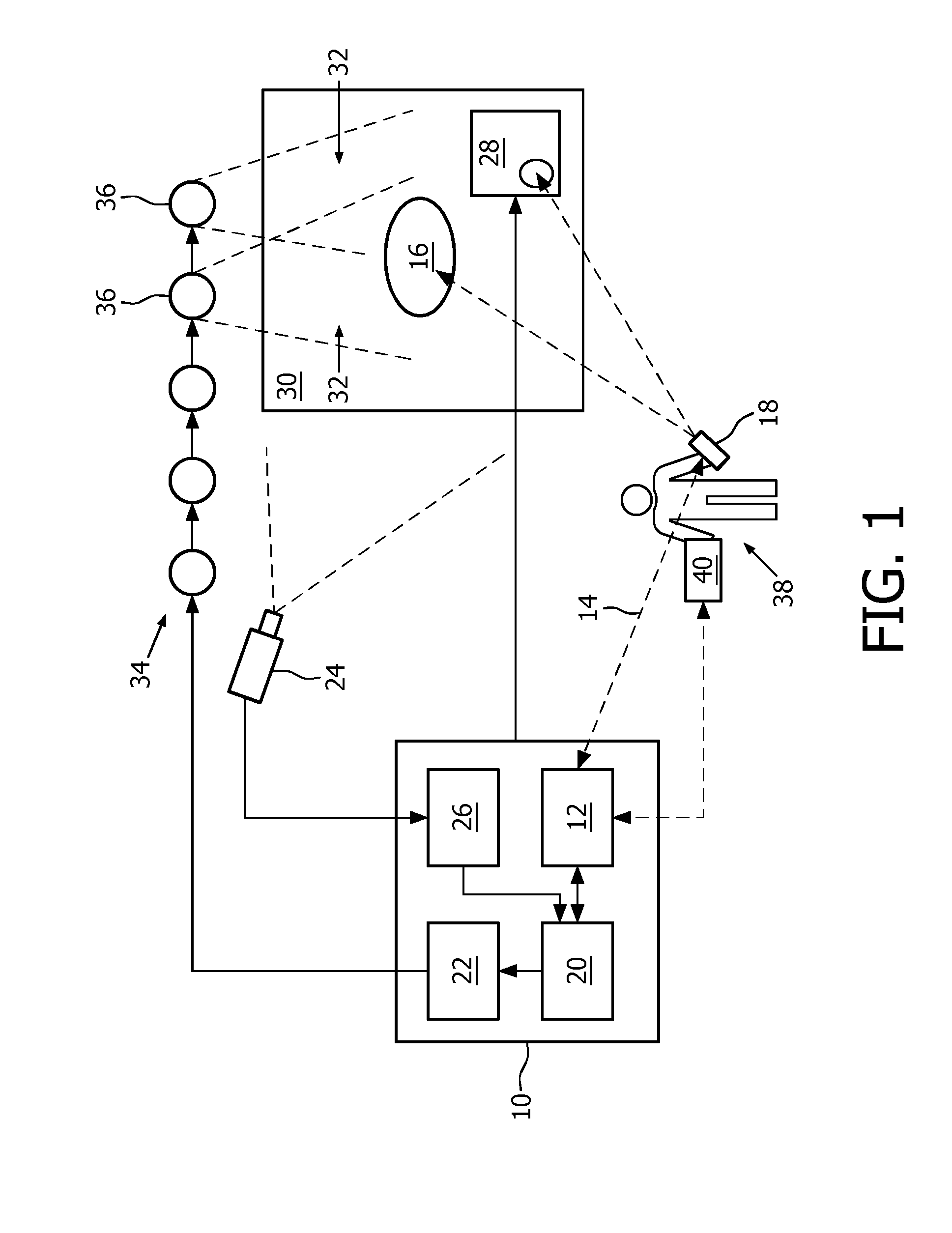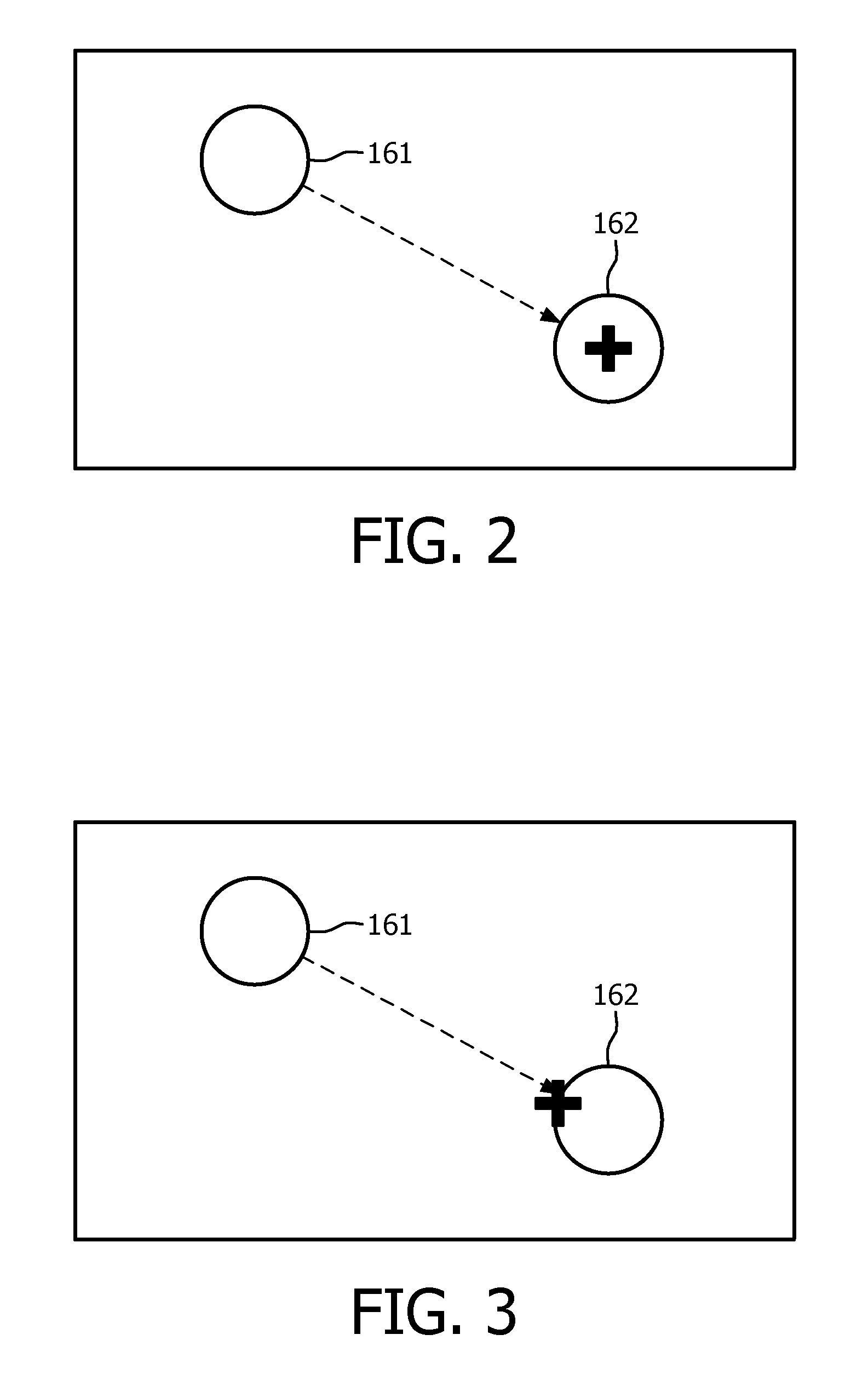Interactive lighting control system and method
- Summary
- Abstract
- Description
- Claims
- Application Information
AI Technical Summary
Benefits of technology
Problems solved by technology
Method used
Image
Examples
Embodiment Construction
[0048]In the following, functionally similar or identical elements may have the same reference numerals. The terms “lamp”, “light” and “luminary” describe the same.
[0049]FIG. 1 shows an interactive lighting control system 10 comprising an interface 12, for example a wireless transceiver being adapted for receiving wirelessly data from an input device 18, a light effect controller 20, a light effect creator 22, and a video processing unit 26 for processing video data captured with a camera 24 connected to the interactive lighting system 10. The interactive lighting control system 10 is provided for controlling a lighting infrastructure 34 comprising several lamps 36 installed in a real environment such as a room with a wall 30. The system 10 may be implemented by a computer executing software implementing the modules 20, 22 and 26 of the system 10. The interface 12 may then be for example a Bluetooth™ or a WiFi transceiver of the computer. The system 10 may further be connected with ...
PUM
 Login to View More
Login to View More Abstract
Description
Claims
Application Information
 Login to View More
Login to View More - R&D
- Intellectual Property
- Life Sciences
- Materials
- Tech Scout
- Unparalleled Data Quality
- Higher Quality Content
- 60% Fewer Hallucinations
Browse by: Latest US Patents, China's latest patents, Technical Efficacy Thesaurus, Application Domain, Technology Topic, Popular Technical Reports.
© 2025 PatSnap. All rights reserved.Legal|Privacy policy|Modern Slavery Act Transparency Statement|Sitemap|About US| Contact US: help@patsnap.com



